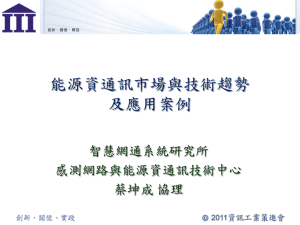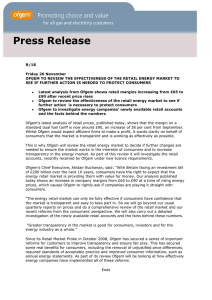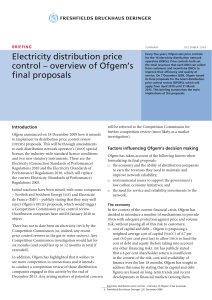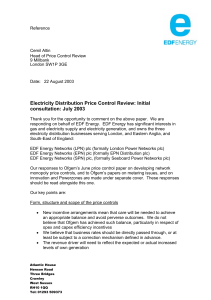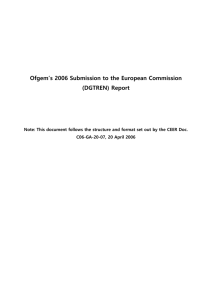BBP02 Briefing Paper August 2009 Smart Network development for
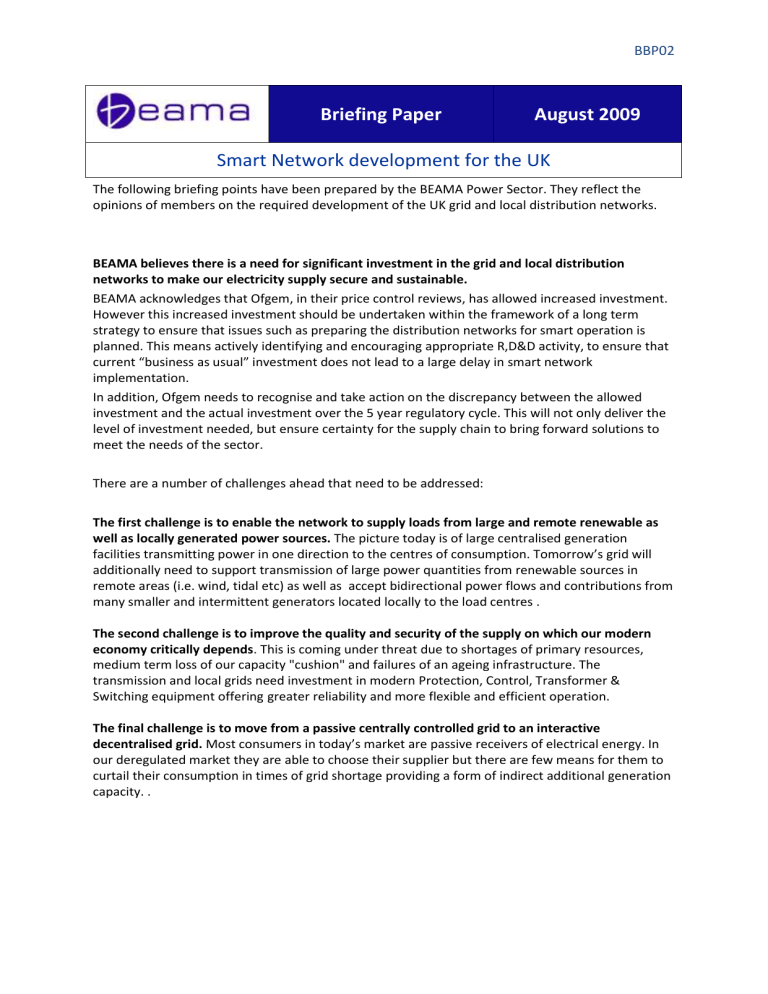
BBP02
Briefing Paper August 2009
Smart Network development for the UK
The following briefing points have been prepared by the BEAMA Power Sector. They reflect the opinions of members on the required development of the UK grid and local distribution networks.
BEAMA believes there is a need for significant investment in the grid and local distribution networks to make our electricity supply secure and sustainable.
BEAMA acknowledges that Ofgem, in their price control reviews, has allowed increased investment.
However this increased investment should be undertaken within the framework of a long term strategy to ensure that issues such as preparing the distribution networks for smart operation is planned. This means actively identifying and encouraging appropriate R,D&D activity, to ensure that current “business as usual” investment does not lead to a large delay in smart network implementation.
In addition, Ofgem needs to recognise and take action on the discrepancy between the allowed investment and the actual investment over the 5 year regulatory cycle. This will not only deliver the level of investment needed, but ensure certainty for the supply chain to bring forward solutions to meet the needs of the sector.
There are a number of challenges ahead that need to be addressed:
The first challenge is to enable the network to supply loads from large and remote renewable as
well as locally generated power sources. The picture today is of large centralised generation facilities transmitting power in one direction to the centres of consumption. Tomorrow’s grid will additionally need to support transmission of large power quantities from renewable sources in remote areas (i.e. wind, tidal etc) as well as accept bidirectional power flows and contributions from many smaller and intermittent generators located locally to the load centres .
The second challenge is to improve the quality and security of the supply on which our modern
economy critically depends. This is coming under threat due to shortages of primary resources, medium term loss of our capacity "cushion" and failures of an ageing infrastructure. The transmission and local grids need investment in modern Protection, Control, Transformer &
Switching equipment offering greater reliability and more flexible and efficient operation.
The final challenge is to move from a passive centrally controlled grid to an interactive
decentralised grid. Most consumers in today’s market are passive receivers of electrical energy. In our deregulated market they are able to choose their supplier but there are few means for them to curtail their consumption in times of grid shortage providing a form of indirect additional generation capacity. .
BBP02
To address these challenges, BEAMA believes Government needs to:
Ensure that Ofgem encourages appropriate and sustained research and development activity to ensure the Smart Network becomes a reality.
Intervene to correct the fragmented and uncoordinated deployment of smart grid technology applications in the UK. We have a concern that the proposals from Ofgem in the latest DPRC5 consultation does not focus sufficiently on this coordination aspect.
Define a clear and coordinated vision of the requirements of a Smart Grid. This vision should clearly tie in with the objectives of a low carbon economy and define a route plan of how this should be achieved and over what time scale. The plan should clearly outline the co ordination that will be required between transmission and distribution companies to ensure an efficient system is achieved from the highest voltage to the connection to the domestic customer. It is encouraging that the UK Government under the ENSG 'smart grid working group' is considering such a vision.
Provide modified regulatory incentives for the Distribution Network Operators (DNOs) to invest in energy efficient equipment, enable the local distribution grids to handle bidirectional flows and reduce losses caused by poor power quality (Power Factor).
Direct Ofgem to ensure DNO adherence to investment programmes agreed at the commencement of a 5 year regulatory period.
Establish with Ofgem national targets for Power Factor, say 0.95 or better, in our local distribution networks, and that any penalty charges applied should be at a level to encourage investment to achieve this PF.
Pilot / encourage the creation of demand management services, based around smart metering, which provide incentives for end users to curtail electricity use in times of capacity shortage.
Encourage the DNO’s to place a higher emphasis on staff training and development to ensure that skills or knowledge failures don’t hamper investment and facilitate Smart Grid investment. The recent Ofgem DPRC proposals in this area are welcome, but we would wish to see some form of sanction to ensure DNO’s actually meet this requirement.




